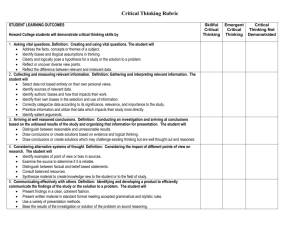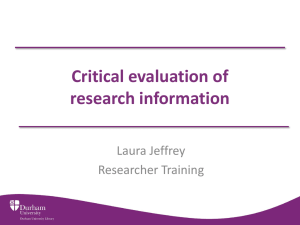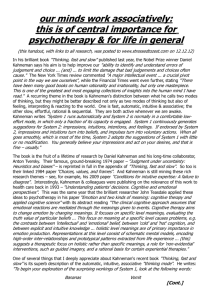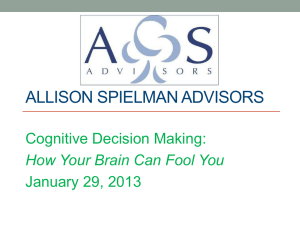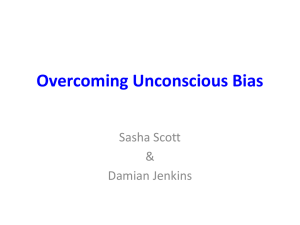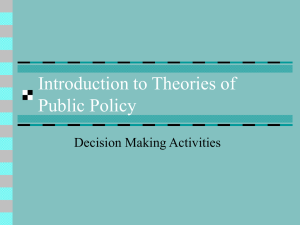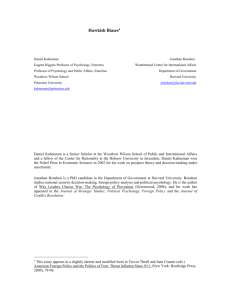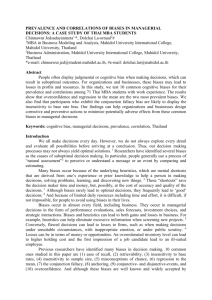A Checklist for Managerial Decision-Making
advertisement
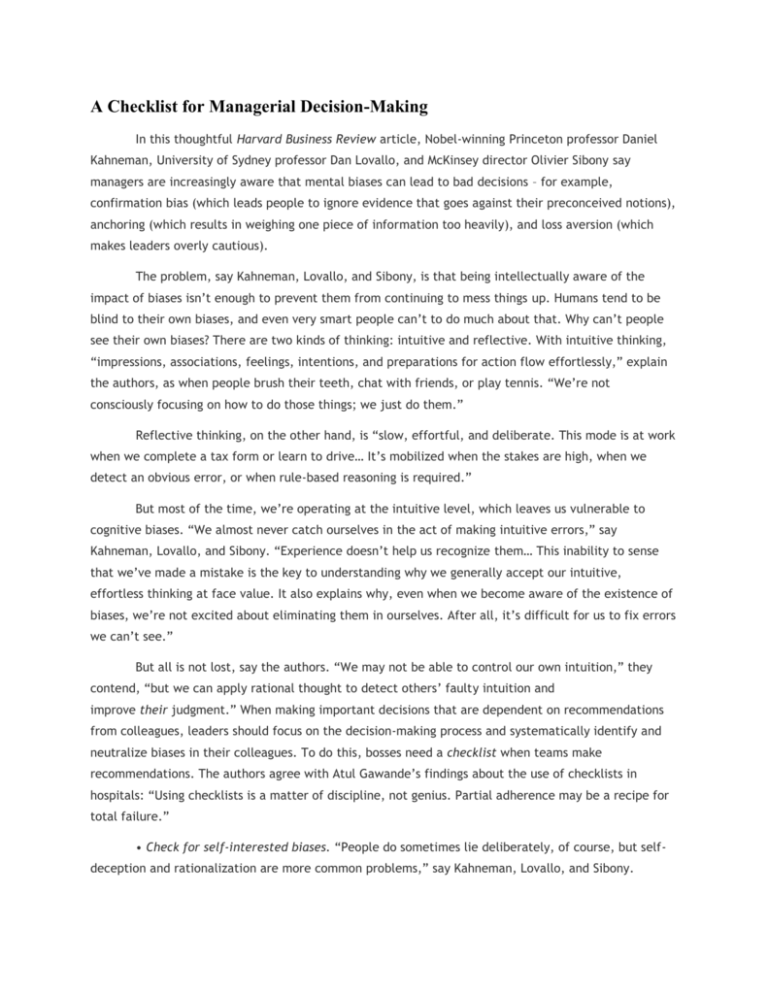
A Checklist for Managerial Decision-Making In this thoughtful Harvard Business Review article, Nobel-winning Princeton professor Daniel Kahneman, University of Sydney professor Dan Lovallo, and McKinsey director Olivier Sibony say managers are increasingly aware that mental biases can lead to bad decisions – for example, confirmation bias (which leads people to ignore evidence that goes against their preconceived notions), anchoring (which results in weighing one piece of information too heavily), and loss aversion (which makes leaders overly cautious). The problem, say Kahneman, Lovallo, and Sibony, is that being intellectually aware of the impact of biases isn’t enough to prevent them from continuing to mess things up. Humans tend to be blind to their own biases, and even very smart people can’t to do much about that. Why can’t people see their own biases? There are two kinds of thinking: intuitive and reflective. With intuitive thinking, “impressions, associations, feelings, intentions, and preparations for action flow effortlessly,” explain the authors, as when people brush their teeth, chat with friends, or play tennis. “We’re not consciously focusing on how to do those things; we just do them.” Reflective thinking, on the other hand, is “slow, effortful, and deliberate. This mode is at work when we complete a tax form or learn to drive… It’s mobilized when the stakes are high, when we detect an obvious error, or when rule-based reasoning is required.” But most of the time, we’re operating at the intuitive level, which leaves us vulnerable to cognitive biases. “We almost never catch ourselves in the act of making intuitive errors,” say Kahneman, Lovallo, and Sibony. “Experience doesn’t help us recognize them… This inability to sense that we’ve made a mistake is the key to understanding why we generally accept our intuitive, effortless thinking at face value. It also explains why, even when we become aware of the existence of biases, we’re not excited about eliminating them in ourselves. After all, it’s difficult for us to fix errors we can’t see.” But all is not lost, say the authors. “We may not be able to control our own intuition,” they contend, “but we can apply rational thought to detect others’ faulty intuition and improve their judgment.” When making important decisions that are dependent on recommendations from colleagues, leaders should focus on the decision-making process and systematically identify and neutralize biases in their colleagues. To do this, bosses need a checklist when teams make recommendations. The authors agree with Atul Gawande’s findings about the use of checklists in hospitals: “Using checklists is a matter of discipline, not genius. Partial adherence may be a recipe for total failure.” • Check for self-interested biases. “People do sometimes lie deliberately, of course, but selfdeception and rationalization are more common problems,” say Kahneman, Lovallo, and Sibony. Managers shouldn’t ask directly about self-interest, which would come across as questioning integrity and diligence, but they should probe for this possibility. • Check to see if the team fell in love with its recommendation. “When evaluating something we like, we tend to minimize its risks and costs and exaggerate its benefits,” say the authors. “When assessing something we dislike, we do the opposite.” If this is occurring, it’s time for an extra-careful examination of the components of the recommendation. • Check for groupthink. Were dissenting voices stifled? “Regardless of its cause, an absence of dissent in a team addressing a complex problem should sound an alarm,” say the authors. Short-term, the manager may have to speak to one or two team members privately to find the real story. Longterm, managers should strive to create a climate where dissent and arguments are seen as healthy. • Check to see if the recommendation was overly influenced by an analogous situation. People sometimes use past successes to argue for a similar program (an example of saliency bias), and the manager has to ask whether the analogy is apt. • Check for confirmation bias. When trying to solve a problem, groups have a tendency to come up with one plausible hypothesis and then search only for evidence that supports it. The manager needs to ask what other alternatives were considered, and ask teams to present more than one recommended course of action. • Check for availability bias. This gets at the WYSIATI assumption: What you see is all there is. “Because our intuitive mind constructs a coherent narrative based on the evidence we have,” explain Kahneman, Lovallo, and Sibony, “making up for holes in it, we tend to overlook what is missing.” One question a manager can ask is whether we would make the same decision a year from now, when different information is available. • Check for anchoring bias. There’s a tendency for teams to use initial estimates or figures extrapolated from past history and stick with them. Managers need to ask where the numbers came from and request solid evidence or new analysis. • Check for the halo effect. There’s a tendency to assume that because a person or approach was successful in one area, they will be just as successful in another. The manager needs to eliminate false inferences and ask the team to seek additional comparable examples. • Check to see if the recommendation is overly attached to past decisions. People tend to go with past practices, and the manager needs to challenge that and ask for a thorough rationale as if the decision were being made for the first time. • Check for overconfidence. The manager needs to push teams to take a harder look and adopt an outsider’s perspective, thinking through what could go wrong. • Check for disaster neglect. The manager might have the team construct a pre-mortem, imagining that the worst has happened and constructing a story explaining why. • Check for loss aversion. Is the team being overly cautious because it fears consequences? Managers need to realign incentives or remove risks so colleagues aren’t too conservative in their recommendations. “Before You Make That Big Decision…” by Daniel Kahneman, Dan Lovallo, and Olivier Sibony in Harvard Business Review, June 2011 (Vol. 89, #6, p. 50-60), no e-link available; Lovallo and Sibony are at dan.lavallo@sydney.edu.au and olivier_sibony@mckinsey.com. Taken from AWSA Marshall Memo with permission 5/25/11
